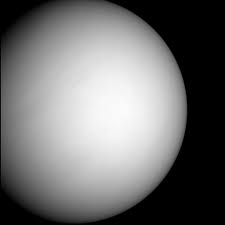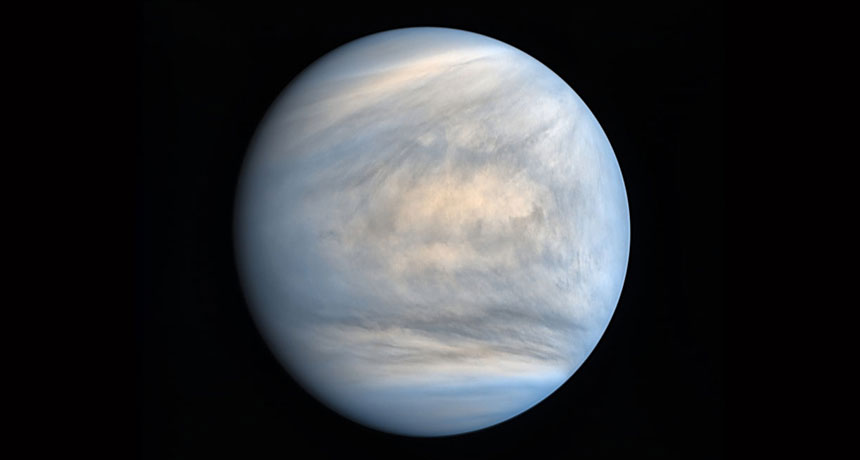Venus Lights Up Evening Sky

Venus is dominating the evening sky high in the west after sunset. Dazzling Venus, the planetary love goddess, dazzles all month long with its brilliance. Closer to the sun’s intense light than Earth is, Venus outshines all other planets, let alone every star, in our sky.
Venus has been traveling in its orbit about the far side of the sun and is now swinging around toward us, catching up to Earth. It’s like watching an automobile during a NASCAR race as it comes around the turn from the backside track, heading down the stretch in front of the grandstand. Due to its decreasing distance from us, Venus’ apparent brightness and size is increasing proportionally.
A telescope will help track Venus’ changes in apparent size and phase. In early March Venus’ disk is slightly gibbous. But by month’s end Venus is almost exactly half full. Likewise, the apparent diameter of Venus increases by 36 percent over the same period.
Venus reaches “greatest eastern elongation” on March 24. This means Venus’ angular distance from the sun will be at its greatest, allowing Venus to remain in the sky for nearly three hours after sunset.
In terms of size, Venus and Earth are nearly twins. Venus’ diameter is slightly smaller – 95% that of Earth. Venus’ mass is 82% compared with Earth. That means a person would weigh about 9% less on Venus than on Earth. If you weigh 100 pounds on Earth, you would weigh 91 on Venus.
Climate wise, there are big differences. Whereas the average Fahrenheit temperature on earth may be in the high 50s, Venus’ average temperature approaches 900°F. Venus has an atmospheric pressure 90 times greater than Earth. Venus’ atmosphere is composed mostly of carbon dioxide and clouds of sulfur dioxide.

If Earth and Venus are twins, they are the fraternal kind, not identical twins.
The Vernal Equinox, shortly before midnight on the night of March 19, marks the start of the spring season in Earth’s northern hemisphere. At the time of the Equinox the sun stands directly over the Equator.
Years ago, I had heard you could stand an egg on its end during an Equinox. This was purportedly an effect caused by the Earth-sun geometry. I tried it with a dozen eggs and succeeded standing most of them on their large end.
Except later I discovered that this was not due to anything astronomical. On a microscopic level, egg shells are rather bumpy. The bumps act as little tripod legs allowing the egg to stand upright. It doesn’t work with every egg, but the truth is that it works on any day of the year, not just the Equinoxes. Turns out, the egg-Equinox connection is simply an urban myth.
Speaking of urban myths, “daylight savings” time begins on Sunday, March 8. By government order, we turn our clocks forward an hour in hopes of gaining some extra daylight. Of course, the length of the day is unchanged. It is only the apparent clock time of sunrise and sunset that lurches forward by an hour.
I am not old enough to remember how it happened, but I suspect a politician somewhere once promised that a vote to implement daylight time will give voters an extra hour of daylight during the summer. After all, many voters might check the box if promised free stuff. Naturally, there is no such thing as a free lunch. The price paid is that the sun comes up an hour later in the morning. The bottom line is that daylight cannot be conserved or lost.
That is some bad science that was likely a feel good way of tricking voters. Sort of along the lines of ‘you can keep your doctor.”
The effect of daylight time for star gazers is that it gets darker later. For persons having to get up in the morning and go to work it means one less hour to enjoy the splendor of the night sky.
–Curt Roelle
